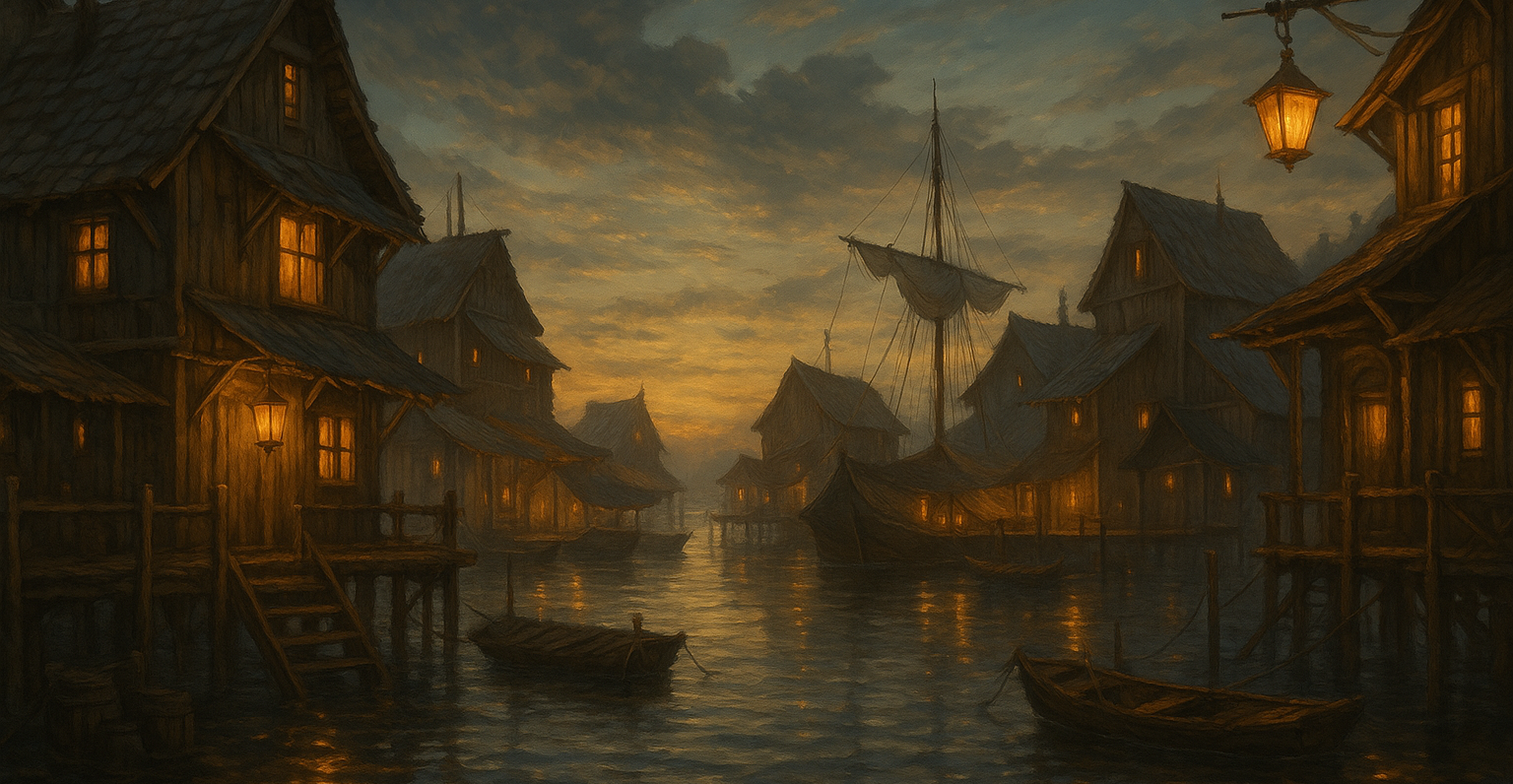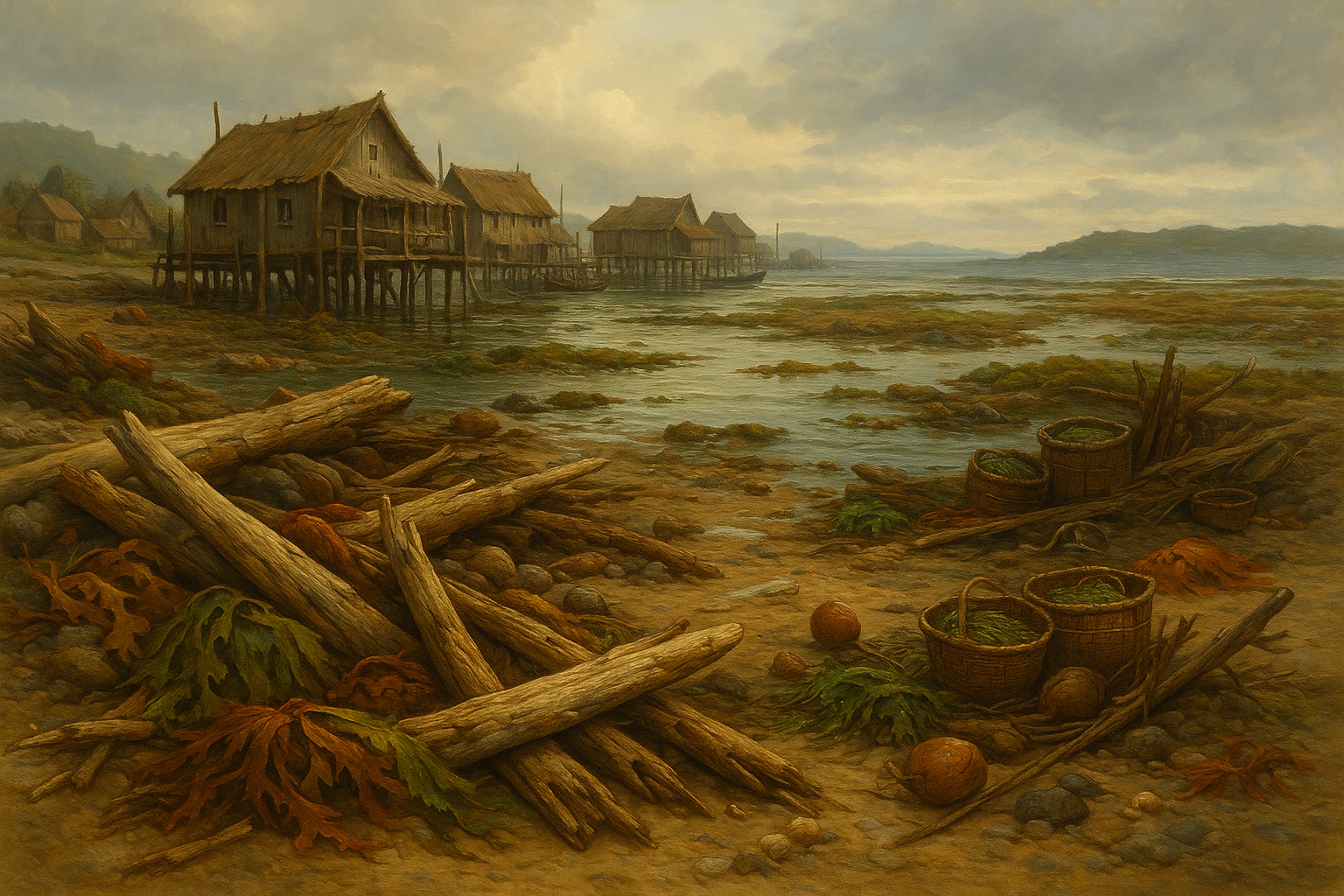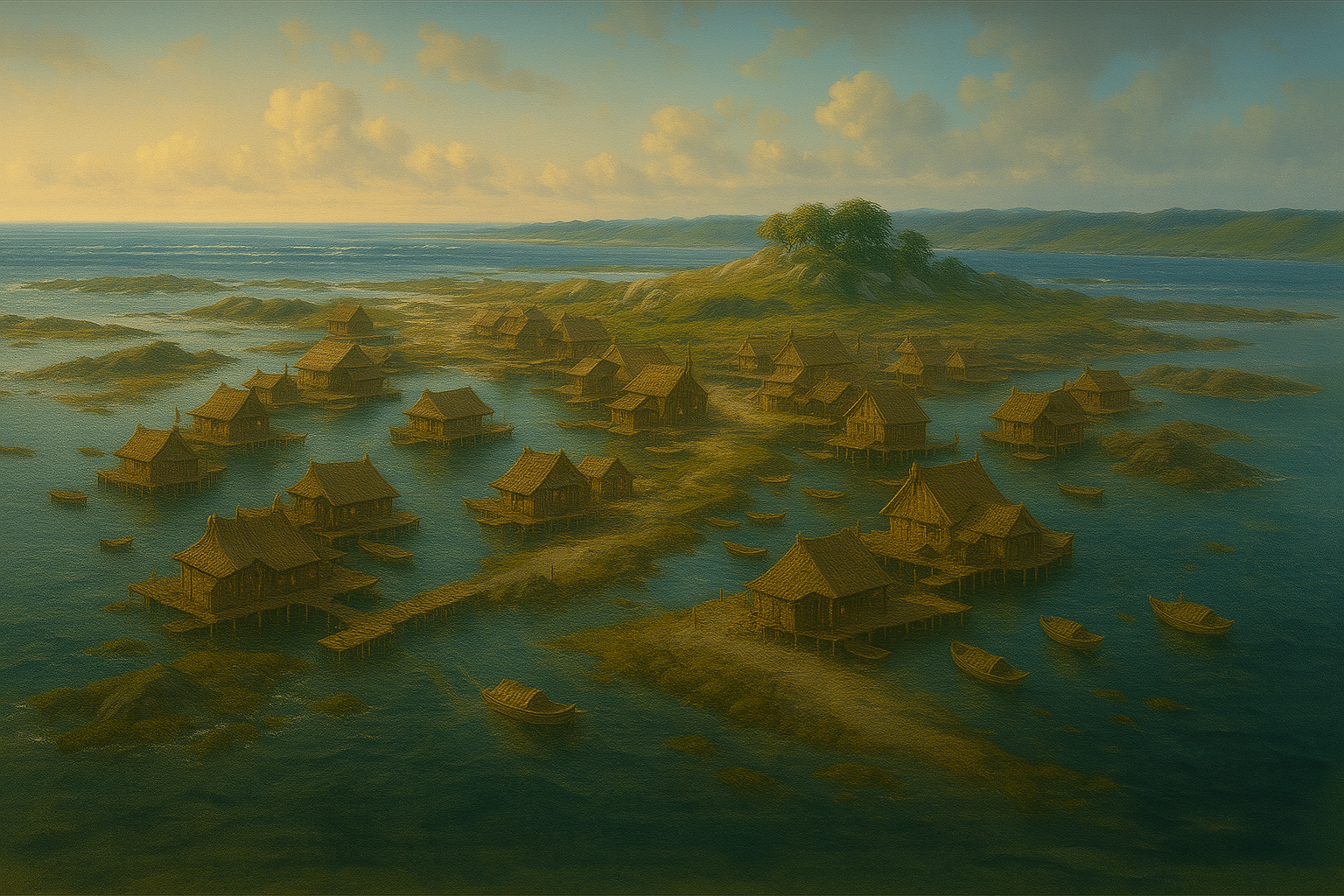Tirlowen
Tirlowen is a tidal island nestled along the northern coast of Miranore, shaped by the ebb and flow of the sea that defines its character. For much of the year, the island appears as a modest rise of rocky terrain and tidal flats, partially submerged during high tides and storms, only to reveal winding causeways, kelp-covered stones, and salt-swept beaches when the waters recede. It is not a large island, less than five square miles in area, but it is rich in tidal pools, natural inlets, and brackish marshes that nurture a wide variety of aquatic and semi-aquatic life. The terrain is uneven, with jagged rocks and gentle slopes that vanish beneath the sea for part of each day, and occasional dense patches of wind-stunted trees and sea-grass meadows clinging to higher ground.
Though deceptively modest, the island is renowned for its adaptability and resilience. Tirlowen’s unique rhythm of exposure and submersion has given rise to highly specialized infrastructure, flora, and fauna. The land’s natural shape funnels the tide into swift, predictable channels, creating both hazards and opportunities for those who know how to navigate them. Stone outcroppings double as natural piers during high tide, while shallows become harvest grounds for mussels, crabs, and seaweed at low tide. Much of the “shoreline” shifts daily, and no road remains dry for long.
As a geographic location, Tirlowen is more than just a place to live, it is a challenge to meet and a rhythm to match.
Localized Phenomena
Tirlowen is built on a tidal island uniquely shaped by powerful oceanic cycles. Twice a year, during the vernal and autumnal equinoxes, the town becomes almost entirely submerged beneath the sea. Known locally as the High Shroud, this phenomenon can last anywhere from a few days to over a week or more, depending on the lunar alignment and prevailing weather. During this time, the island vanishes beneath the waves, leaving only the tallest structures and anchored platforms bobbing above the surface. Residents either evacuate to floating quarters, temporarily migrate inland, or, more commonly, adapt, with many buildings designed to float, rise on stilts, or detach and relocate as needed.
Even outside these peak events, the tide in Tirlowen shifts dramatically each day. Low tide reveals muddy flats rich in foraging resources, while high tide transforms the settlement into a clustered archipelago of floating walkways and tethered homes. Rope bridges, modular docks, and small ferry-boats are vital for navigating the town during these changes. Children are taught to swim before they can walk, and storm protocols are treated as sacred rites.
The island itself is thought to rest atop a shallow reef shelf that dips into deeper trenches not far off the coast. As such, storms and strong currents can arrive with little warning, pushing seawater inland with startling speed. This volatility has fostered a culture of vigilance, innovation, and communal cooperation, residents often joke that the town is “only ever borrowed from the sea.”
While not magical in origin, the island’s shifting visibility and aquatic character have attracted a wide range of rumors and folk legends. Some say the town moves slightly each year. Others believe an ancient sea spirit sleeps beneath the reef and breathes with the tides. Whatever the truth, Tirlowen endures, half-drowned and half-dreamed.
Natural Resources
Tirlowen’s greatest natural resource is the sea itself. The surrounding waters teem with fish, mollusks, and crustaceans, forming the backbone of the town’s diet and trade. Kelp forests just offshore provide both food and material for rope, nets, dyes, and even rudimentary textiles. The tidal flats exposed during low tide offer access to rare salts, clays, and a variety of edible seaweeds and herbs prized by coastal apothecaries and healers.
Driftwood and storm-swept timber wash ashore frequently, supplying the town with building materials in the absence of dense inland forests. Coral fragments and seashells are collected and polished for use in trade, jewelry, or decoration, and are especially favored in local artisan markets. Beneath the silt and muck, some claim deposits of sea glass and even traces of pearl-bearing oysters can be found, though such discoveries are rare and fiercely protected when uncovered.
Though not rich in metal or stone, Tirlowen thrives on adaptability, harvesting what the tide offers and making use of every salvageable piece the ocean leaves behind.
Type
Island
Location under
Included Locations
Owning Organization






I've been to small islands like this, having grown up on the east coast of Canada, and they are truly amazing places, and certainly both in the waters around them and within their tidal areas and the small land masses themselves, despite often the immediate obviously lack of freshwater, there is an amazing and wide biodiversity most wouldn't immediately expect. The life that thrives in and around such little islands is also always very adaptive, they have to be, they are at the whims of the tides, weather and more, more so than even larger landmasses and coastal areas. They need to be resilient, specialized, yet adaptable. I always find the times I get to see how people approach such locales (rare though it is) a great joy. This was wonderfully written. Well done :)
Thank you! I've never been to a place like this, but I know they exist. Seemed like a perfect place for the prompt.
"Every story is a thread, and together we weave worlds."
The Origin of Tanaria